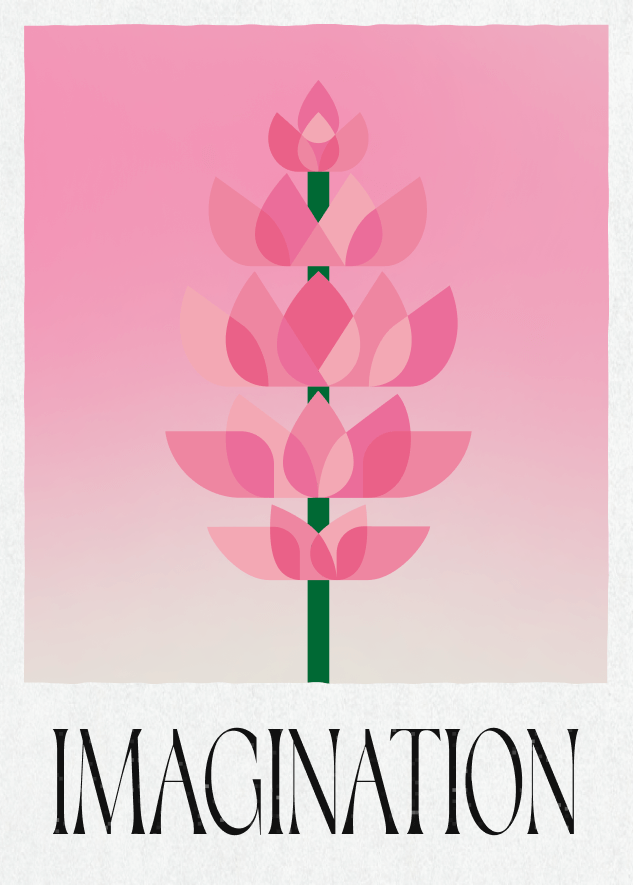ARTIFICE
The skills required to
drive communication home.
Acanthus (known as haazami in Japanese) is not so well-known in Japan. However, in its native region of the Mediterranean it is particularly well liked, especially in Greece, where it is the designated national flower. When in bloom, flower’s stem elongates, with blooms clustered along the long stem rather like an ear of wheat. These blooms produce purple sepals and white petals, with a contrast that is very pleasing to the eye. Acanthus also produces large, glossy deep green leaves, with a pleasant shape. The flower’s likeness is often used as a decorative pattern in architecture or on vases. Able to withstand both heat and cold, and sturdy enough to grow naturally in the wild, acanthus sometimes grows as tall as 1.5 meters, making its presence known. In ancient Greece, the flower was famous as a decorative motif on the pillars of various buildings, and in the ‘language of flowers’ it means “art” or “skill.”
Acanthus, which is the flower’s scientific as well as English name, comes from the Greek akantha, which refers to the pointy end of the leaves found on some varieties of the plant. This makes me think of how “artistic skills” are frequently not only beautiful, but, in many cases, may include an edgy approach that stings with a certain sharpness. We may assume that, in ancient Greece, architecture began using the minimum necessary materials, but that as time passed, people use their imagination to add elements such as sculptures, imbuing the architecture with various added meaning and value, resulting in wonderful artwork that, even generations later, was still able to cast a spell on those who saw it. That being the case, we may suppose that these works contain many different layers and include hidden hints on how to attract the attention of people with a diverse range of preferences.
In this essay, we discussed “ways of developing new connections,” and “artistic skill” functions as an extremely important element in the achievement of that goal. In our information-based society today, we cannot really rely on accidental connections. On social media, people are already fully occupied trying to show everyone else the fulfilling life they are leading. If we only have limited opportunities to make new connections, then the advance preparations we make to maximize the chance of making those connections attain the upmost importance. If our initial preparation is lacking, we cannot necessarily make up for it after the connection is made. That is why we must intricately design a clever approach.
As the spread of social media has led to an overwhelming volume of information, it is becoming extremely difficult for individuals to make decisions about how they should react to the information they find in front of them. People are extremely cautious because, if they are not able to select and identify correct information, and get taken in by fake news, as I touched on in the previous chapter, they may find that their own future behavior and achievements suffered a significant negative impact. We can see that “artwork and copy,” the most traditional techniques in the communication industry, once again proves its importance. In other words, we must get back to basics and update the ways we approach potential customers through advertisements created by artistic directors and copywriters.
However, since people today are surrounded by a flood of information, we can almost never guarantee that, in the manner of years past, writing high-quality copy, or broadcasting a large volume of extremely creative commercials that strongly appeal to people’s emotions will necessarily result in large numbers of people already knowing and talking about the commercial by the following day. We are moving away from competition over the extent to which we can express ourselves in memorable words or flamboyant expressions, and towards an era in which the competition focuses around the ability to create a story that moves people emotionally, in other words, an era in which we are required to produce a deeper message. Even if people try to set themselves apart from the crowd using previous methods such as interesting plays on words or attention-grabbing use of the latest advanced technology, examples of these methods are absolutely everywhere, we could almost describe these techniques as “commodified.”
Only those real messages that truly strike at the heart of the target audience will succeed in taking firm route among the waves of information, managing to survive and thrive. Even the definition of the phrase “artistic skill” is moving away from an emphasis on technique, and towards an interpretation that favors emphasis on the know how to create emotional moments. While this is not exactly the same thing as Greek architecture, we can imagine that if people are only talking about the beauty of a pattern or the imposing size of a giant pillar, then they are not truly captivated by the art, and will soon tire of talking about it. However, if they start talking about “what kind of person created the art and why,” or what we could call “the attitude surrounding the creative motivation and the background that led to it,” then we can say that the art has truly captivated its audience.
The examples we are going to look at below show how, in this way, those who have a strong passion or motivation, or are facing a unique situation and challenge, can manage to create a work without simply shouting “listen to me!” unilaterally at society. We will look at excellent examples of creators that have stayed true to the heart of their creative vision while at the same time managing to form their vision in a way that delivers an emotional impact, with the message they have produced exerting a strong influence on its audience. These words could be described as a “new evolution” of the craft of advertising artwork and copywriting. These messages embed themselves deeply into the listener’s psychology, forcing them to think, and sometimes even overturning the previous value judgments. The first of these case studies is the #flutwein - our worst vintage campaign.
#flutwein - our worst vintage


A tragedy occurred in an area known as the “paradise of red wine.” The Ahr Region of Germany is famous for the production of red wine. In the summer of 2021, the region was struck by devastating floods, with houses, businesses, bridges, roads, even whole communities, getting washed away. Wineries too were unable to avoid damage, with more than 46 different wineries suffering losses including damage to their facilities, cellars, wine barrels, machinery, and several hectares of vineyards. All the industry had left was approximately 200,000 bottles of wine which, covered in mud and earth, could not nornally be shipped to market. However, the winemakers never gave up, and decided to try and get the area back on its feet by selling the muddied wine bottles (flutwein) via a crowdfunding project. This resulted in the muddied wine bottles becoming a source of solidarity and assistance for the winemakers’ community, and a symbol of the disaster. The unusual appearance of the bottles served to inform the wider public of the direct economic damage suffered by winemakers in the disaster, leading to growing calls for the industry to receive help. The campaign generated more than 1 billion media impressions, and the 200,000 wine bottles sold out completely, purchased by around 50,000 supporters.
When people suffer devastating losses in the face of natural disasters, which are impossible to fight against, they can fall into the depths of despair. However, if those affected by a disaster don’t give up, look forward, and show courage to try and overcome their difficult situation, society will show them support. Usually, we would not be surprised to see mud-covered wine, with its unattractive appearance, to be perceived by any potential buyers as “dirty” and “without value.” However, looked at from a different perspective, this is wine that has survived and overcome a disaster, living through a story that gives it a value that goes beyond its basic value as a simple object. The story comes across not as a trite, soppy appeal, but as a narrative that naturally speaks to people’s emotions, allowing this wine to develop a new form of value even the design of the mud-covered bottles began to win plaudit for its uniqueness. Once recognized for their beautiful, sophistication, which contrasts so completely with the rawness of the mud, the wine bottles developed an iconic status, achieving additional value as an example of strong design. The wine became a particular topic of conversation among influencers with strong, market-leading opinions on design matters. This resulted in the market value of the wine increasing by a factor of 45, with the campaign producing in a final total of €4.4 million in donations. While this was helped by the fact that buying the wine started to serve as a statement of support for disaster relief, the wine’s achievement of a solid position in the market was also due to the way in which it began to serve as a visible marker for people with a sophisticated sense of values.
If you are living in Japan, you may well have heard of a similar series of events. In the summer of 2018, after torrential rains struck many places in Japan, the Asahi sake brewery in Yamaguchi Prefecture, one of the affected areas, started selling their damaged sake as “reconstruction sake” instead of disposing of it. This campaign resulted in total sales of 580,000 bottles, with the donation of 200 yen per bottle adding up to a total value of 116 million yen. In future, we will likely see further examples of this same approach, and these campaigns too will have their own authenticity.
As we can see from these examples, all countries can get behind a narrative that involves helping those in trouble after a disaster. The reason that people get behind such campaigns is they know that one day the shoe may be on the other foot and they, or their community, could be the ones in trouble. People imagine themselves in that situation and think how they would feel and what they would do. This kind of narrative is a key part of today’s communication. We can see how relief activities can go beyond a simple reaction of seeing people in trouble and wanting to donate to include a range of other behaviors such as the sharing of information about people’s circumstances, and even the perception of value in muddied bottles of wine. We can clearly see here how the various different perceptions of value arising from these narratives get people thinking and talking, tearing down old assumptions to produce new rules and a “new normal.”
While inverse, paradoxical approaches such as the above “there is value in a dirty object” may grab people’s attention and interest, generating an impact, as we can see in the following campaign, there are also interesting examples of people reversing the antagonistic actions of another group to get them on their side. We can see this now, in the remarkable “Go Back To Africa” campaign.
Go Back To Africa

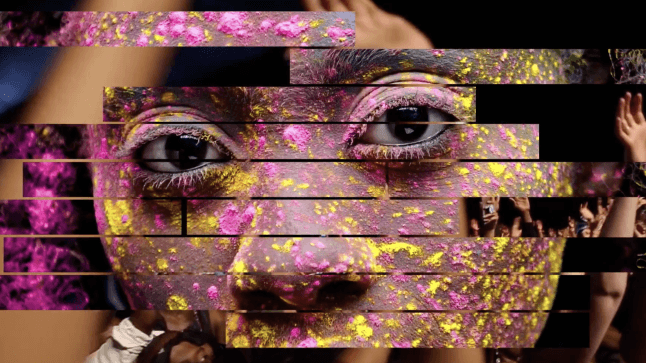
Between 1525 and 1866, more than 12.5 million Africans were taken from their communities and forced to work as slaves, a history that we must never forget. However, the descendants of slaves continue to face oppresion, with discriminatory phrases such as “Go back to Africa” being used on social media platforms once every three minutes. Wouldn’t it be amazing if discriminatory phrases could be reborn to serve the opposite purpose of supporting the Black community?
Black & Abroad, a travel brand that serves the Black community, adopted this satisfying policy of taking an antagonistic phrase and turning it in their favor. To create the campaign, Black & Abroad searched for posts on Twitter (now ‘X’) using the phrase “Go Back To Africa.” They then redacted the other discriminatory parts of the tweet, and, using only that phrase, created new posts for their public account together with background pictures of the immense natural beauty of Africa.
In other words, more people posted hate speech attacks, the more opportunities the company had to positively encourage people to take a journey to Africa. By also including in the campaign numerous photos taken by Black travelers on holiday in Africa, they also took on the widespread prejudice that traveling on holiday is something “only White people do.”
However, addressing discrimination was not actually the major aim behind the campaign. The principal aim behind the campaign was to help the travel company overcome the two major hurdles that stood in the way of marketing holidays to Africa. The first of these was the “widespread misunderstanding that Africa was too dangerous and unsuitable as a travel destination,” while the second was that “Black travelers were not featured in commercial images of travel.” The campaign aimed to address these two issues while also fulfilling the company’s own mission of “strengthening its position as a leader redefining global experiences for the modern Black traveler.” That is why the company decided to repurpose “Go Back To Africa.”
Using such a phrase is something of a double-edged sword. While the phrase is already associated with hostility, popularizing a reversed interpretation of the phrase is a powerful way of provoking discussion over the issue. Transforming frequently used hate speech to leverage its power positively is rather like the martial art of aikido, which focuses on using the opponent’s attacking strength against them. Hostile phrases tend to spread rapidly on social media precisely because of the negative emotion put into them, and deciding to try and harness that power positively requires an extremely courageous decision. However, it is also a carefully crafted strategy, since showing the determination to run this campaign allows the company to boast of its credentials to the Black community, while also reclaiming hateful language.
The campaign was a success in terms of brand building, with awareness of the brand increasing by 315%, and the number of people searching for the brand doubled. It also succeeded from a marketing perspective, with a 60% increase in the number of people interested in reserving a tour in Africa organized by Black & Abroad, and 88% of viewers responding that the commercial increased their interest in visiting Africa. 89% of viewers said that the campaign had reduced the hurt they felt when hearing the phrase Go Back To Africa, with 52% saying that the phrase now gave them “hope” or “strength.” Taking hate speech and transforming it into something positive is certainly commendable. The campaign received virtually unanimous acclaim from the Black community, with large numbers of people proclaiming it to be “Dope!”
As I wrote earlier, when someone is driven to creative inspiration, the stronger the emotions that spark that creativity, (be that anger, doubt, sadness, or dissatisfaction) the more powerful the output of that creative process tends to be. Perhaps this is because a large gap between an ideal world and reality requires creative work that has the power and energy to cover much ground. We can understand this process by looking at various examples of campaigns designed to address a gap that is being overlooked or treated as nonexistent by the majority of people. Lancing a large boil can result in lingering trouble, and even some bleeding. Therefore it requires skillful technique. In the same way, running this kind of campaign requires considerable skill. Here, we see an emotional, creative campaign that celebrates the natural, majestic beauty of Africa and the travelers that enjoy it; a campaign that is designed with a careful algorithm to draw people into its target while at the same time being extremely logical, and these leaps help to make this an extremely attractive campaign.
In Japan, people have long tried to avoid highlighting, or drawing unnecessary attention to controversial issues. However, as we see from examples around the world, working vigorously, and with creativity to address troublesome issues and emotions (such as anger, sadness, or an “enemy”), can provide a strong burst of energy.
In both of the prior examples, the creators of the advertising campaign have not avoided difficult issues or problems, instead converting them into something with design value, working to transform the original situation/statement into something positive, applying a new context without losing any of the original power. In some ways, it is reminiscent of a rap battle, when a rapper takes the insults thrown at them by the other party, rearranges them, and throws them back. It is a skill of stepping into the other party’s arena and being able to say what you want to say.
Let’s continue in this vein by looking at some further examples of people who have demonstrated that skill of taking the other party’s actions and, as if doing aikido, reverse the move to come out on top.
This campaign takes the words of regulators/censors, who claim that “artistic expression that features nudity is pornography,” throwing those words back to clearly state their own opinions in an arena that the other party does not expect them to enter. The campaign, from the Vienna Tourist Board, is called “Vienna strips on OnlyFans.”
VIENNA strips on OnlyFans

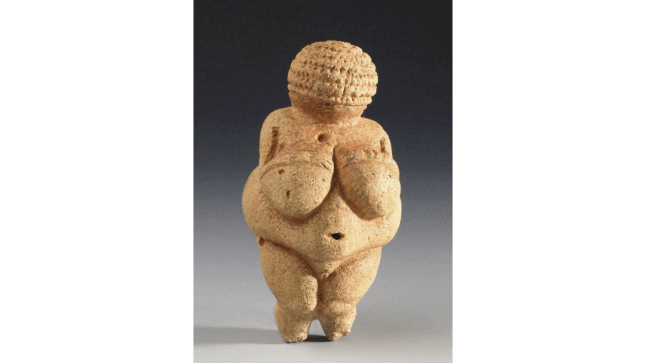
Vienna is the birthplace of many globally recognized artistic works. 100 years ago, it was also the venue of a battle by various artists for the freedom of expression. Now, 100 years later, algorithms on Facebook and Instagram have labeled some artistic works from Vienna as “pornography” resulting in the forced closure of certain social media accounts. In particular, the Vienna Tourist Board had its official social media account blocked, and its posts deleted. This left the Tourist Board having to defend the honor of its country’s artistic assets, encouraging people around the world to recognize their value once again. To protest against the algorithm’s censorship, the Tourist Board started to publish the artworks that have been labeled “pornography” on the subscription platform “OnlyFans,” a platform which allows the publication of pornographic content. This bold protest resulted in 2,500 articles published around the world, causing a major debate that reached more than 730 million people.
It is not uncommon for social media algorithms to erroneously flag up certain artistic works as pornography. On one previous example, a video on female breast cancer examinations had to use a man’s chest*1 instead of a woman’s chest to escape censorship. This shows that sometimes, technology runs away from its original purpose, producing an unintended, excessive action. As we have got used to the convenience and enjoyment of technology, it has, at some point, crossed a line into unexpected territory.
- *1 :
- The NPO MACMA made a video instructing women on how to perform a self-examination to promote the early discovery of breast cancer. As Facebook and Instagram both sensor videos and images that show a naked female breast, MACMA decided to use a male model, with a female hand examining a male breast. As the chest of an obese man can in English be referred to a “man boobs,” this phrase was used as the title of the video. Not only did the video become the most widely shared ever breast cancer self-examination video on social media, it also sparked a debate about social media censorship policy.
The example of erroneously censoring art perhaps helps us realize that this line has been crossed. It is extremely doubtful whether technology can understand art, or the values that humans use to judge aesthetic sense and artistic merit. The creativity shown in this campaign is perhaps one way of delivering “a mistake for a mistake.” The campaign looked at the algorithm’s judgments as a “mistake” and responded by exhibiting the art on OnlyFans, where the art did not really belong, which is another “mistake.” This is a completely new style of advertising. By encouraging the public to compare the two “wrong judgments,” the campaign forces us to think, and provides an opportunity for dialogue. This is another form of narrative.
It is also a course of action that is based in and unshakable respect for artistic expression, including nude figures. We can also expect that campaign became a topic of conversation among users of OnlyFans. What would people, who were enjoying looking at other content on the site, think if they suddenly came across a content channel that was presenting high quality, noble art? I would imagine that many people had their interest piqued by the surprise and went on to read the various explanations accompanying the Viennese works. This feeling of “encountering something out of place” can help these users to understand themselves, and to gain some understanding of the issue at hand. The campaign succeeds in creating a feeling of awkwardness and delivering a new point of contact to a variety of people. It is surprising and confounding to see a government-backed organization creating an official account on an adults-only site. While this campaign required a steely commitment on the part of the Tourist Board, it encourages viewers to consider the motivations and intentions of the advertiser, asking themselves “why would a government organization be advertising here?” This is one reason why the campaign stuck in people’s minds and created something of a sensation.
Towards the start of this essay, I spoke about how the universality of digital technology that allows even non-professionals to freely create and share content has led us to the point where the distinguishing feature setting campaigns apart is “the emotions and background story that motivated the campaign originator.” However, we may note here, in a slightly contradictory fashion, that simply having an emotional motivation is not enough to drive people to click the ‘like’ button. That issue has become clear from the results of a survey of more than 100 NPOs that we conducted for this project.
If the emotion and background story driving the motivation of the advertisement’s originator is one thing advertising creatives should think about, then another issue that also requires creative input is “how that motivation can be communicated, and how connections with supporters can be created.” Remember that “creativity” is not something that only certain individuals can exercise. We could start to see creative possibilities simply by taking a slightly different perspective from that which we have habitually taken in the past. You shouldn’t assume that you cannot be creative simply because you have a standard view of things. Quite the opposite. In today’s world, whether we can maintain an ordinary person’s sensitivity to issues is of importance, and this plays an important role in finding connection points between our own views and intentions and a correct view of the topics that the general public will find interesting.
Of course, we should remember that a “normal point of view” is also something that changes with the times. As you may know, many long-selling products subtly change their taste, without informing consumers, to ensure that they remain consistent with contemporary preferences. While those changes may be small, people’s values do change continually. If we think about the instant when an item of information reaches a certain individual, and think how we would react and what we would do, if we were the individual in that position, then we should naturally be able to gain visibility on possible actions that we could take. This is one path into “good creativity.” We don’t need to think too intensely about creativity as only something that no one else has ever thought of before; something that must be put that into practice with flawless execution. One example of a creative idea that was pull from ordinary conversations along the lines of “wouldn’t it be fun to have that?” or “wouldn’t it be good to have that?” is this campaign from Heineken, entitled “The Closer.” Compared to the campaigns we looked at above, it is a little silly and lighthearted, but let’s take a look!
The Closer

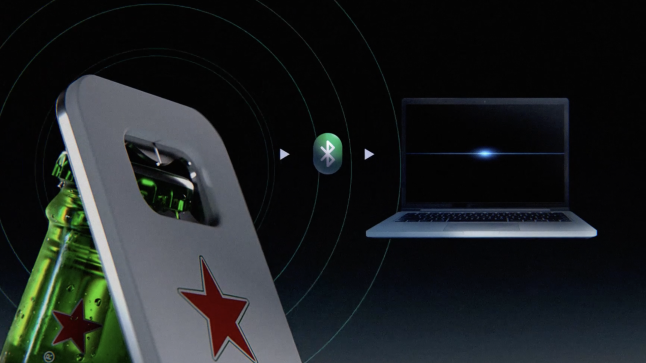
This campaign, which is just a sort of campaign we might expect from a beer company, drew attention to the excessive use of remote work in the post-pandemic world. While we may see him/her at work has a flexible way of working, data from around the world shows that workers are engaging in an average of 7.6 hours per week of unpaid overtime through work on emails, messaging apps, and other applications, with seven out of 10 workers revealing that they respond to work messages outside their working hours.
The campaign focuses on Heineken’s conception that of itself as “a brand that believes that life is better when people get together.” It is designed to highlight how drawing a line under your work is easier than you might expect. The company developed, and delivered around the world, “The Closer,” a Bluetooth-enabled bottle opener that automatically shuts down your work PC when, as an end of day ritual, you open a bottle of beer. In the promotional video, using “The Closer” also automatically shuts down the PCs of surrounding colleagues, causing chaos in the office. If that actually happened to me, I would find it pretty frustrating, but it certainly is entertaining to watch it happening to someone else!
“The Closer” campaign is, in the best possible meaning of the phrase, “quite silly,” and it is not intended to actually convince people watching that the device is a solution to the problem of overwork. Rather, it is intended to show the ridiculousness of the feeling people have inside that “they have to work.” It is putting forward the proposal that logging off from work and getting together with your friends is something you should prioritize, encouraging people to think about that option. In other words, it is trying to encourage people to turn away from the current trend towards “hustle culture,” which requires people to be always available for work.
In today’s world, where technology has removed temporal and physical barriers to work, work is eating into and fusing with people’s daily lives as never before. If you are engrossed in the world of that technology, then you find yourself naturally immersed in the world of work. It is true that people are trying to think about work-life balance and keeping these issues in mind. Significant numbers of people are succeeding in leading balanced lives. However, factors in the working environment can overturn that trend. Heineken, through its device, is putting forward its brand’s position that it is actually easier than you might think to disconnect from the world of work and doing so will actually improve your life.
Heineken handed out 12,000 units of “The Closer” in 115 countries. The method of delivery differed by region and included purchasing incentives, lucky draw prizes, and limited-edition gifts. The campaign generated a large volume of earned media, reaching 200 million people around the world, contributing to the recognition of Heineken as a company seriously committed to tackling the issue of work-life balance.
It was the laidback, slightly crazy nature of the campaign that endeared it particularly to generation Z. It is clear that, right from the start, Heineken intended the campaign to create a touchpoint with the younger generations who are moving away from alcohol. “The Closer” looks to have created a social movement around the world, and in Japan it was available as a gift in a closed campaign. By working creatively to develop a device that encapsulated its brand message while drawing attention to the labor issues that affect everyone, Heineken was able to position itself as a leading authority on labor issues among beverage manufacturers; that is quite an achievement for this campaign.
In Japan, giving away campaign gifts is still a frequent tactic, but it is a wasted opportunity to only give away trinkets that the receiver may not even be pleased to have. In contrast, ideas that can provide an opportunity to communicate your organization’s policies through various touch points are consistent with the desire of many organizations to combine their communications and marketing, and so the next time you decide to run an incentive campaign, it is worth thinking once again seriously about how you intend to infuse your organization’s ideals into the campaign execution.
Finally, let us look at a few past examples of campaigns that work to transform perceptions.
One successful example of a campaign that transformed the long-held image of a product is a campaign for P&G’s Old Spice series of bath products for men. In this product category, Unilever has a major share of the market, and Old Spice was frequently perceived as a product for seniors, an image P&G sought to change.
Old Spice was originally manufactured and sold by the Shulton Company, which was founded in 1934. It started life as a product for women but was remarketed as a product for men from 1938 onwards. It is an extremely long running brand. In 1990, Shulton was acquired by P&G, with P&G making efforts to further expand the market for Old Spice. However, the market for young men’s bath products, including their target zone of consumers aged 12 to 24, was already dominated by Axe from Unilever. The reason for Old Spice’s declining market share was the perception of Old Spice as an old-fashioned product. That is why, in 2010, P&G broadcast a Super Bowl commercial aiming to greatly change the product’s image. The advertisement, called “The Man Your Man Could Smell Like,” featured former NFL star Isaiah Mustafa as the Old Spice Guy.
The Man Your Man Could Smell Like

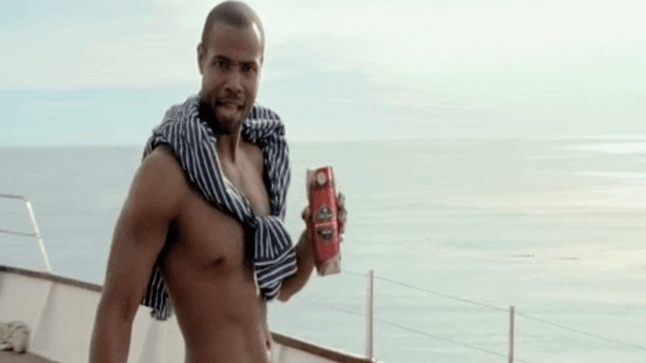
Looking back, the advertisement seems quite stereotypical and somewhat difficult to take on board. In just 30 seconds, there are an incredible volume of text and visual gimmicks, ensuring you can’t look away for even one second. However, the ad is not simply intended just to be funny. Advertisements for men’s products are generally targeted towards men, this advertisement was pitch not at men, but at the women alongside them. This method, of reaching out to not the main users of the product but rather those around the main users of the product who can indirectly influence decisions on its purchase, which is a cleverly designed marketing strategy that includes, in various different ways, efforts to position Old Spice as far away as possible from Axe, its competitor. Of course, the effectiveness of the campaign was enhanced by factors including the visual appeal of Isaiah Mustafa as the advertisement’s main talent, and the power of the tagline that appears at the end, overall, one can say that the commercial is extremely successful in using a clever approach that goes beyond simple “artistic creativity” to successfully integrate its various related strategies.
Old Spice (2011)


Perhaps because of the success of this campaign, from the following year onward P&G continued producing commercials featuring Isaiah Mustafa as the Old Spice Guy. In 2011, the company produced and posted to social media a commercial film that showed the Old Spice Guy responding individually to questions and tweets from fans. Using the unusual technique of filming and posting the answers in real time, the company produced an incredible 186 video responses in just 2.5 days. It’s worth noting that this could be considered an updated version of the methods used for The Subservient Chicken*2 advertisement that Burger King ran in 2004. P&G used social media to create a more interactive version which put a more modern, advanced spin on those aspects of The Subservient Chicken campaign that had previously drawn plaudits. The new Old Spice campaign was very successful, achieving 300 million online mentions from consumers, a 2700% increase in Twitter followers, 300% increase in owned website visits, and more than 40 million YouTube videos views in the course of a week.
- *2 :
- This campaign was a pioneer in providing individual online responses to customers. It worked has a parody of the web cam sex businesses which were at the time popular, with a chicken (human being in a chicken costume) standing in front of a web camera and performing in response to request. If told to dance, the chicken danced, if told to sing, the chicken sang. Its movements were highly comical. After attracting 400 million visits, the chicken was so popular it became a character in its own right, breaking out of its original campaign to appear on TV shows and develop a life of its own. The Subservient Chicken’s popularity meant that it continued to generate publicity even when the brand did not make any deliberate plans with it, remaining popular, and the face of Burger King, for nearly 10 more years.
In 2018, Mustafa once again appeared at the Old Spice Guy in “It's Another Tide Ad,” as advertisement for a separate P&G product. This campaign also “borrowed” techniques used by Burger King in the previous year, creating a great deal of conversation by bringing Mustafa’s character out of his original context and placing him in an advert for another product.
This is a great example of a company following standard methods, and then evolving and expanding them to build on the impact that it originally created, moving in line with the times from a classical approach, to the advertisement based on real time responses, to finally, the novel same character/multiple context technique. We could simply view this as a bold, slightly crazy, marketing strategy, and think no more about it, but this campaign is based on a series of careful calculations. The series of advertisements demonstrates that even if an idea has been running for a long time, it can achieve particularly large results if it is revised and polished to meet the demands of a newer era. It also helps us realize that, as time passes, there is not a complete and total change in the way that people view and respond. Old Spice shows that people will always, quite naturally, respond emotionally to communication that gives them an authentic sense of the party that is trying to reach them.
Another example of transforming a product’s image comes from the Swedish supermarket Coop, and their 2016 campaign “The Organic Effect.” This is a successful example of “N = 1 marketing,” a term that we recently hear quite frequently.
The Organic Effect

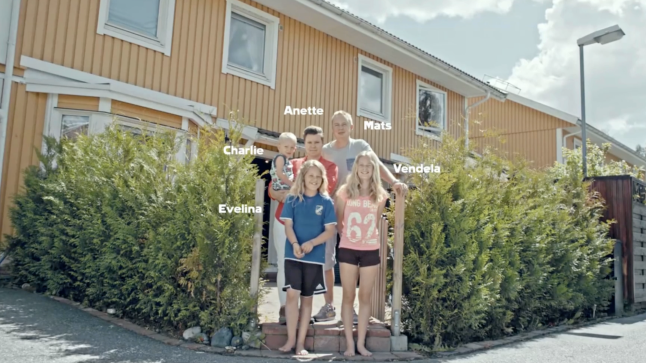
The campaign, which aims to promote organic food, features a family attempting to live only on organic food for two weeks. The experiment showed that after two weeks, almost all trace of all agrichemicals (pesticides) had been eliminated from their bodies, highlighting the benefits of organic food. The campaign, with a concrete example, highlighted how, usually, toxic components from pesticides in food remain in the body, but this problem can be avoided with organic food, encourage in consumers to take that option.
“N=1 marketing” works by avoiding a focus on the average values of a large number of market research samples, and instead simply taking one set of symbolic results, and go into those results in detail. The Coop campaign functions as an investigative “N=1” documentary. The campaign limited its focus to just one typical Swedish family, to measure the impact that foods have on our bodies. The selected family was composed of multiple generations, with male and female adults, and younger children, including an infant. The commercial highlighted the benefits of organic food on each of these groups. Usually, when looking at data, advertisers like to have a large volume of data from multiple subjects. The largest apparent population, the more trustworthy data, and when selecting particular groups as a target of the communication, the universality of the results is used as a source of persuasiveness. However, in this case, simply following a single family and a documentary style for two weeks added “reality” to the situation, creating an open trustworthy source of data through a “clinical trial” that did not rely on numbers alone.
While a governmental research institution was involved in the project, having only a small number of subjects would ordinarily lead to skepticism over the data collected. However, rather than focus on solidly collecting data, Coop predicted that the advertisement would change consumer’s attitudes by showing them that “In just two weeks, by sticking to this diet, you can really change your physical health to this degree.” Rather than get bogged down in “correct” statistics, they chose the unique method of directly showing the process and results to consumers through video. Instead of generating a temporary sense of surprise by saying “look what the data revealed,” the campaign instead adopted the strategy of putting the vague doubts that consumers had about the process out into the open, so as to persuade viewers and leave a more lasting impression.
In addition, the campaign was not aiming to achieve a mild change in attitude along the lines of “organic food is perhaps better for your health and other food,” but rather to create a sharper warning that had consumers thinking “unless we eat organic food, toxic substances will accumulate in our bodies.”
While this could be described as one form of “shock therapy,” it results in peoples thinking not “this option might maybe be better,” but instead “I have to have this option!” encouraging a deep change in attitude that will lead into changes in purchasing behavior. Even if a campaign encourages people to think and pushes them towards the stage of considering a purchase, that is not the desired result. The success of this campaign lies in its ability to take consumers all the way to the point of actually buying a product to try it out. Of course, producing a message like this may lead to attacks from organizations with various related interests, but being prepared to raise one’s voice despite the expectation of a backlash shows the company’s strong determination, and that determination in itself can attract consumer support. Coop succeeded not only in achieving its highest sales figures over the past 20 years, it also succeeded in producing a sustained increase in the sales of organic food products throughout Sweden.
While our work as advertising creatives requires qualitative and quantitative investigations, this case study shows that, with a little ingenuity, we can produce major change. The Pareto Principle states that 80% of results come from 20% of the work. If we take this to mean that if 80% of customers are responsible for the 20% of the profits, then rather than listening to the opinions of the 80% majority, it would seem obvious that organizations are better served by moving closer to the 20% of high-value customers. Those 20% may well be the company’s ideal customers, that is the customer segment that the organization should focus on growing. If so, then the extent to which potential users can be provided with strong customer experiences that will satisfy that customer segment will be of crucial importance to the organization’s future. This campaign therefore has much to teach us about avoiding focus on short-term increases in sales to instead concentrate on making the most out of medium-long-term relationships with high value customers.
In 2022, Japan recorded its highest ever total advertising expenditure, and this expenditure is expected to continue growing through to 2025, a projection which is good news for the industry. The “Old Spice” campaign and “The Organic Effect” campaign, which evolve traditional methods, use technology to breathe new meanings and new narratives into existing words, and as we can see from the “Go Back To Africa” campaign, which repurposed a particular phrase, and “The Closer” device, sought to create a memorable, instant experience, the growth in the variety of these campaigns shows no sign of slowing down.
People have been saying for a long time that the advertising industry is stagnating, but we can see growing advertising expenditure in all areas other than traditional media, and the case studies we have introduced here demonstrate how campaigns that reach beyond traditional advertising methods can serve as a catalyst for the further energization of communication methods.
That said, when it comes to creative advertising expression, we recently must bear in mind the need to maintain fairness and equality. There is world full of unconscious bias, and such biases are now being strongly rejected as an unwanted legacy of previous eras. However, as a human being, completely removing every category of your own bias is extremely difficult. If we are excessively focused on fairness and equality, we may find that our biases tie us up in knots, and we will be unable to find good solutions.
Of course, one can also say that noticing one’s own biases is the first step forward. Through the five senses, including taste and vision, we can all share in the examples we have seen, including the wine that generates value even when covered in mud, the majestic beauty of the natural environment in Africa, the fine and noble arts, or the silliness of unusual devices and comical video footage. Sharing positive experiences of common things is one way towards overcoming prejudice, and I believe that, from our position in this industry, we must work to harness communication that can accelerate and expand that trend. “Feel our vibes, then feel your bias.” Feeling the same vibes can serve as an opportunity to recognize one’s own internal biases. If we can all go beyond those biases, we will no doubt find ourselves in a beautiful world.

